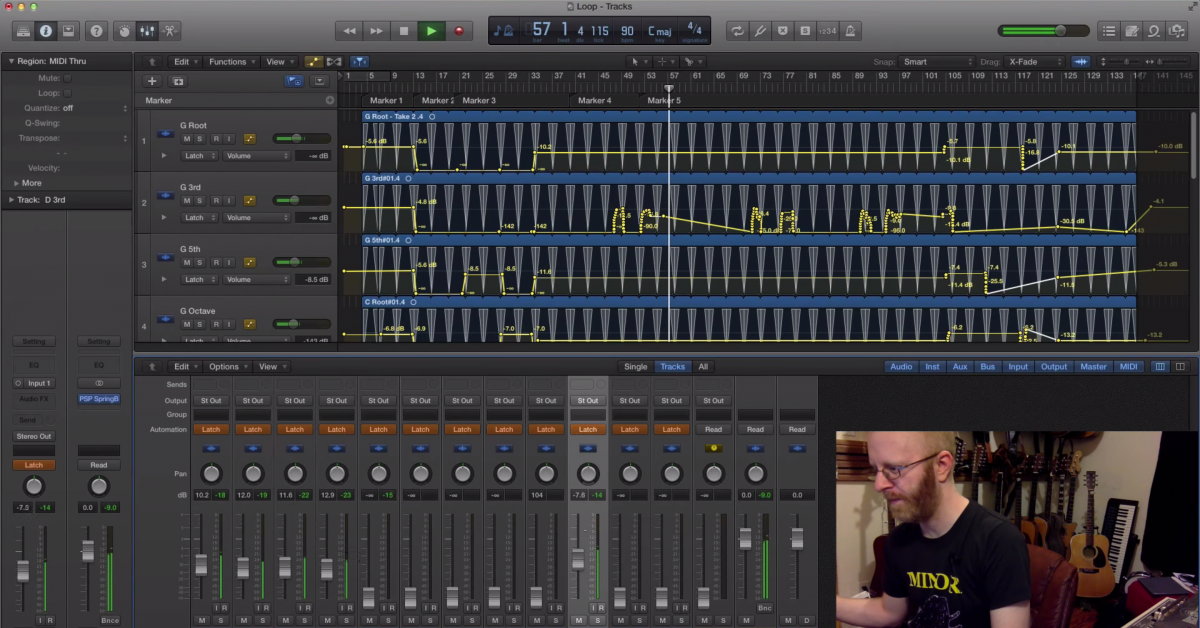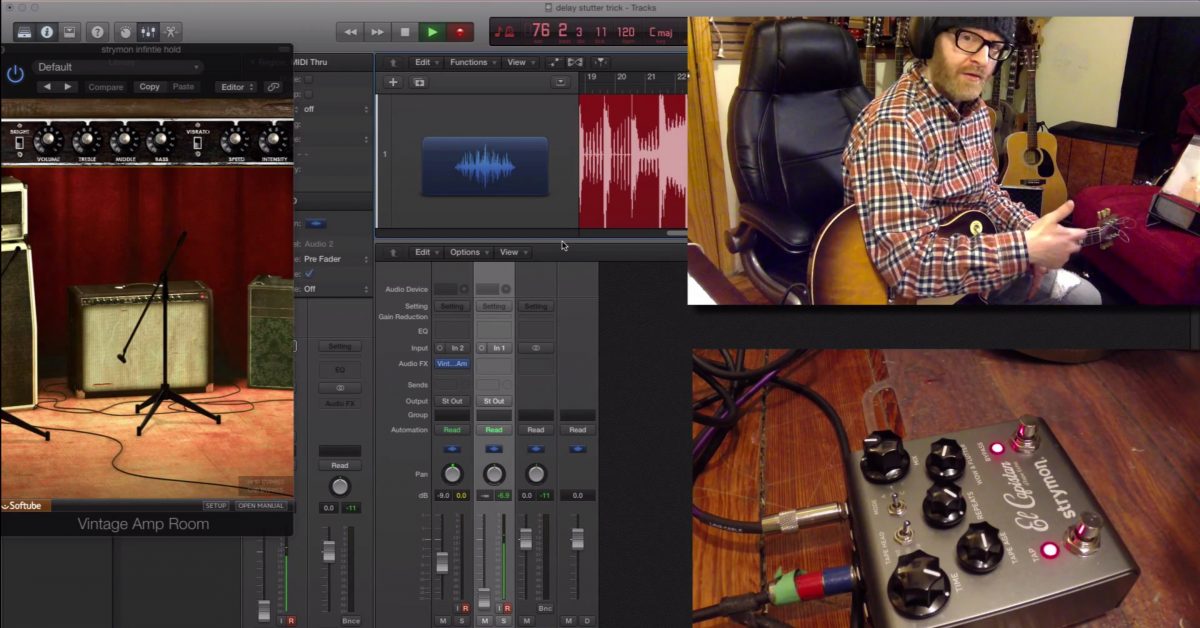The Basics of Chords — Part 2
Article Content
In this article, you’ll be given several techniques used to add or substitute chords in your compositions to expand them or make them more interesting. This is a rather big topic, so we’re going to stick with major keys for now. Minor keys are very interesting in their own right, and we’ll have reason to come back to them later on.
Substitution By Function
One of the basic forms of chord substitution is something called, “substitution by function.” This simply means that you can substitute one chord for another if they both have the same function in the key you’re in.
If you don’t understand what is meant by the term “function,” go back to the previous article and review. Let’s clarify the concept with a simple diatonic (uses no notes outside the key we’re in) chord progression in C major as an example:
C F C G C
If we change the F chord to another subdominant chord we would have this:
C Dm C G C
Now let’s do something about that tonic chord being repeated so many times. We have two more chords in this key that have a tonic function: Am and Em. How about this:
C Dm Em G Am
Pretty different from the original chord progression, but it is basically expressing the same thing. You might have to change a note or two in the melody for this type of chord substitution to work, or you can use this method to extend your original chord progression, or come up with chords for a different section of the song.
Secondary Dominants
This is a concept that immediately gives you a lot of new chords to use. You now (should) know where to find the dominant chord of any key. If you’re unsure, simply go up a fifth from any chord (the fifth of your tonic chord becomes the root note of the dominant chord) to find the root note of its dominant chord.
So what if I told you that you could have five more dominant chords that can safely be used in the key you’re in? We’ve used the dominant chord that leads to the tonic, but you can do this when going to any other chord too (I’ve excluded the chord formed on the seventh degree of the scale, Bdim in C major).
Let’s have a look at this simple chord progression in the key of C major:
C F Dm G C
Now let’s add some secondary dominants. Usually, the secondary dominants might last a little shorter than the diatonic chords, since they have the function of leading to another chord, and are not really part of the key we’re in. A7 is the dominant of Dm, so let’s add that in front of it.
We’ll also add the dominant of G, which is D7, and lastly we add G7, which is not really a secondary dominant in this scenario:
C F A7 Dm D7 G G7 C
For a more subtle approach, sometimes you can omit the 7th:
C Am Dm Em G C
Is turned into:
C E Am Dm B7 Em G C
Keeping the 7th in the B sounded better to me in this progression, while playing the triad version of E worked well. Use your ears to see what sounds the best.
A Variation On Secondary Dominants
The secondary dominants, as all dominants do, create a strong pull towards the target chord. They make the ear want to hear that specific chord. While this is a satisfying sound since it is a perfect sequence of tension and release, it can get a bit predictable at times. One simple remedy for this is to use substitution by function.
If you have an A7 that is expected to resolve to a Dm, you can use another chord with the same function as your target chord instead. Since Dm is subdominant in the key of C, we’ll use another subdominant chord, namely F. Finally, you can fool the ear of the listener and let the secondary dominant resolve to a chord that is not the target chord at all. This can work well when used sparingly as an unexpected effect.
Getting Back Home
The most obvious and direct way to go back to the tonic is by going with the dominant 7th chord. In C major, this would mean playing a G7 before the C. This is like getting into a taxi and shouting the destination out loud.
Sometimes this might feel too obvious, and you want something a little more subtle. Dropping the 7th can make it a little bit more subtle, since you won’t have the dissonance of the tritone interval (more on this term below). That is the 3rd and the 7th of the dominant chord that want to dissolve into the root and the 3rd of the target chord.
This would be more like taking a bus that goes in the general direction of your destination. If you want to go subtler still, you can use the subdominant chords and put the dominant chord’s root note at the bottom. In C major this would mean F with a G in the bass (written as F/G) and Dm with G in the bass (Dm/G).
The tritone interval is the interval between the third and the seventh of a dominant 7th chord. In other words, three whole tones apart. The tritone substitution is a very common technique in jazz. It means that, instead of playing the dominant 7th chord of the chord you’re heading towards, you play the chord that is a tritone up from that dominant 7th chord.
Too complicated? I’ll make it easy to remember.
If you go up three whole tones from the root of the dominant chord, you’ll end up a halftone above the tonic. So in C major, the tritone substitution is C#7. As mentioned, this technique mostly shows up in jazz, so it might sound out of place in a composition consisting mostly of triad major and minor chords. However, it can be a welcome addition if you use lots of dominant 7th chords and other extensions, like 9ths and 13ths.
Another one worth mentioning is the diminished 7th chord. This is a special little someone that can get you out of trouble a lot of the time when you’re harmonically lost in a composition and need to get back to the tonic.
The dim7 consists of four minor thirds stacked on top of each other. There are really only three dim7 chords, because if you go up chromatically (not skipping any key on the piano), the fourth chord you hit will have the same notes as the first, but in different order. Basically, a dim7 chord can resolve pretty well to any chord that has its root note a half-tone above one of the notes in the dim7 chord.
So the tritone substitution leading to C will be C#7, and the dim7 chord will be Bdim7. Another way to used the dim7 chords is to put it in before the dominant chord. This is a technique commonly used in gospel music. Complete the gospel flavor by using the trick of the subdominant with a dominant root note that I showed you above:
C F F#dim7 F/G
The dim7 when used in a non-jazz context can make the harmony sound a bit more sophisticated.
That’s it! Next time, we’ll look at ways to change key in a song.





